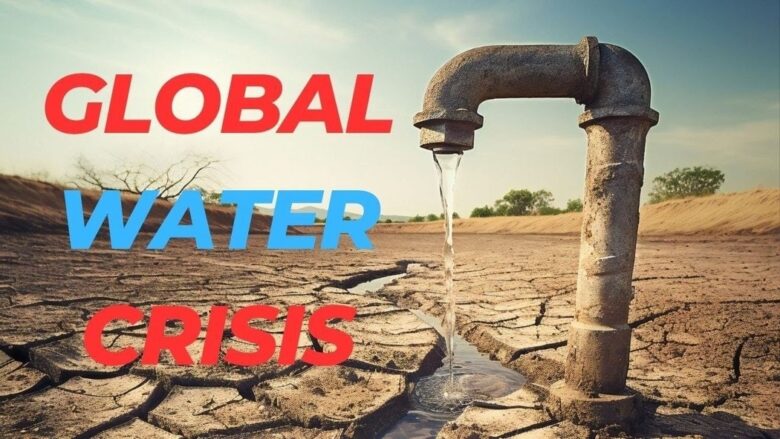The global water crisis is one of the most pressing issues facing humanity today. With water resources becoming increasingly scarce, pollution levels rising, and demand for clean water increasing, the need for innovative solutions is greater than ever. Eco-innovation is driving the search for long-term solutions to environmental problems and offers hope for solving our water-related problems.
Eco-innovation is changing the way we manage and protect water resources in many ways, from improved agricultural practices to more advanced water purification technologies. This article explores how eco-innovation can help solve the world’s water problems by examining the technologies, practices, and policies that work.
Understanding the Global Water Crisis:
Water is essential for life, but millions of people worldwide lack access to safe, clean drinking water. A series of interrelated problems, including overpopulation, overuse, and pollution in agriculture and industry, contribute to the global water crisis. According to the United Nations, approximately 2.2 billion people currently lack access to safe drinking water, and the situation is likely to worsen due to climate change and urbanization.
This disaster is not just affecting individual communities but entire ecosystems. Rivers, lakes, and groundwater resources are being depleted or polluted, threatening biodiversity and damaging fragile ecosystems. Water shortages are also affecting agriculture, industry, and energy production, all of which pose major economic challenges. To solve water problems, we need to take a broad view, including environmental stewardship and the use of new technologies.
A Sustainable Approach to Eco-Innovation:
Eco-innovation refers to the development and application of technologies, products, and methods that contribute to protecting the environment. It aims to minimize environmental impact while addressing pressing ecological problems, such as the global water crisis. Eco-innovation uses creativity and cutting-edge science to provide scalable and sustainable solutions to water management challenges.
For example, eco-innovation promotes the use of clean technologies in water treatment, reduces water waste by implementing efficient systems, and supports circular economy concepts like water reuse and recycling. This long-term solution solves current water problems and helps prevent future crises by addressing the root causes of water shortages and pollution.
Water Purification Technologies Inspired by Nature:
Biomimicry, the process of mimicking the way things work in nature, is a key component of eco-innovation in water purification. By observing how natural systems filter water, scientists have developed improved membrane technologies that mimic biological processes. For instance, scientists have designed some water purification membranes to mimic the way cell membranes permit certain molecules to flow through.
Forward osmosis is one example, similar to the way plants absorb water through their roots. It can effectively purify sewage and remove salt from seawater, making it a very useful tool in places where water is scarce. These nature-based technologies show how eco-innovation can lead to sustainable water purification methods.
More Advanced Filtration Systems:
New developments in filtration technology are changing the way we treat water. For example, nanotechnology has made it possible to develop ultra-fine filtration systems that can remove even the smallest particles from water. These systems use nanomaterials such as carbon nanotubes and graphene to remove heavy metals, pathogens, and other harmful substances from water sources.
Biotechnology is also making progress in the field of water purification. Engineered bacteria break down organic contaminants in wastewater, while enzymes target specific contaminants. These eco-friendly new concepts make water clearer and have a lower impact on the environment than standard water purification procedures.
Sustainable Agricultural Practices:
Agriculture consumes more than 70% of the world’s fresh water, making it a major contributor to water scarcity. Eco-innovation in the agricultural sector is addressing this issue by encouraging water conservation and pollution reduction. For example, precision irrigation systems use modern sensors and data analytics to deliver water directly to plant roots, reducing waste.
Genetic engineering has also helped breed drought-resistant crops, reducing water use in agriculture. These crops thrive in dry environments, contributing to food security and water conservation. The agricultural sector can help solve the global water crisis through agroecological innovation.
Purifying Wastewater and Recycling Resources:
Traditional methods of wastewater treatment focus only on cleaning and often miss the opportunity to extract useful substances from it. Eco-innovation is changing this mindset through biotechnological solutions, making resource extraction possible. For example, anaerobic digestion methods can recover biogas from organic waste in wastewater and use it as renewable energy.
Wastewater treatment plants can also recover nutrients such as nitrogen and phosphorus and use them as fertilizer. These technologies not only improve the efficiency of water treatment but also convert waste into useful resources and promote economic development.
Policies and Financing for Eco-Innovation:
Technological advancements are crucial in addressing water issues, but their implementation requires robust policies and funding. To make eco-innovation a reality, governments, businesses, and groups need to work together. This includes providing financing to companies that use environmentally friendly technologies, setting regulations to prevent water pollution, and encouraging collaboration between the public and private sectors.
Investing in research and development can also ensure that eco-innovation solutions continue to improve. We can accelerate the implementation of technologies that solve global water problems by prioritizing policies that support sustainable development and innovation.
Challenges and Future Initiatives:
Although eco-innovation is progressing well, it still faces numerous challenges that require attention. High costs, limited accessibility, and complex technologies can hinder the widespread adoption of new solutions. Furthermore, reluctance to adapt and a lack of understanding of eco-innovation can slow progress.
To overcome these challenges, future work should focus on improving the economics, scalability, and public awareness of eco-innovation technologies. Strengthening collaboration and sharing expertise across borders can also help us identify long-term solutions to water challenges. If we continue to work diligently, eco-innovation can change the way we manage water resources and ensure a sustainable future for all.
Ways to Make Water More Sustainable:
We need eco-innovation to address global water challenges. We can address water scarcity and pollution by using new technologies, environmentally friendly practices, and regulations that encourage people to work together. Eco-innovation offers scalable solutions, from bionic purification systems to improved wastewater treatment, that benefit both the environment and society.
But to make water more sustainable, everyone needs to work together. To stimulate innovation and ecologically promote responsible water use, governments, businesses, and citizens need to work together. By implementing these solutions in our daily lives, we can ensure that future generations have access to clean water.
FAQs:
1. What does “eco-innovation” mean in the context of the water crisis?
Eco-innovation refers to the development of new technologies and methods for the benefit of the environment, such as tackling pollution and water scarcity.
2. How can biomimicry contribute to clean water?
Biomimicry refers to the development of water purification systems based on the way plants filter water or absorb nutrients.
3. What is the role of agriculture in the water crisis?
Agriculture is the world’s largest user of fresh water. Water-saving methods such as precision irrigation and growing drought-resistant crops can help.
4. Can wastewater be converted into usable resources?
Yes, new eco-friendly wastewater treatment concepts can be recycled into usable resources such as biogas and fertilizers, allowing the economy to keep the cycle going.
5. What are the greatest challenges facing eco-innovation?
The most significant challenges are high costs, complex technology, lack of knowledge, and resistance to change.




